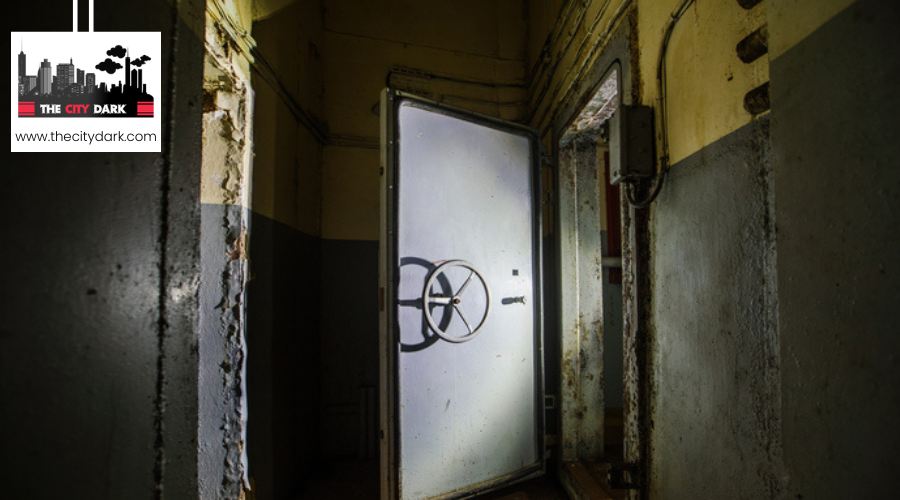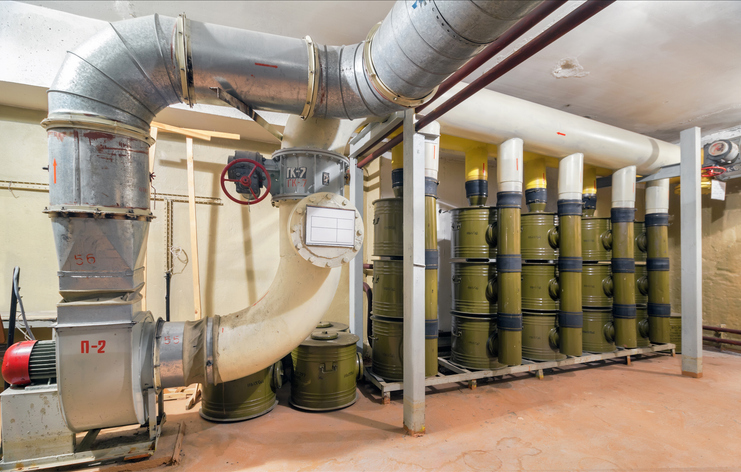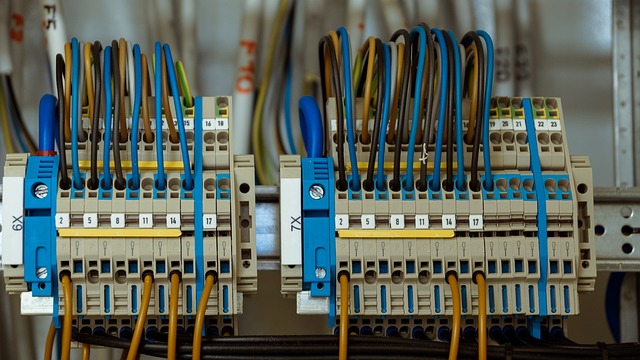Imagine, if you will, the silent, steadfast sentinel that is a bunker, burrowed beneath the earth’s surface, guarding against the elements and unforeseen events. As you ponder its resilience, it’s crucial to remember that this sanctuary requires meticulous care to remain a safe haven over the years.
You’ll need to grapple with the inevitable challenges of structural integrity, air quality, and moisture control, not to mention the essential upkeep of power and water systems. Each of these aspects plays a pivotal role in ensuring your underground refuge continues to offer solace and security.
Yet, the question remains: how do you tackle these maintenance tasks effectively, and what hidden pitfalls should you be wary of? Stick around, and you’ll find strategies that not only preserve your bunker’s integrity but might also unveil some surprising insights into the art of underground living.
Key Takeaways
- Regular inspections for cracks, water damage, and deterioration are essential for maintaining the structural integrity and safety of a bunker.
- Proper maintenance of the air filtration system, including cleaning and replacing air filters, ensures clean air and optimal performance.
- Moisture and humidity control measures, such as implementing dehumidification systems and using hygrometers, are necessary to regulate moisture levels and prevent infiltration.
- Regular inspections, testing, and maintenance of the electrical system and generator are crucial for electrical safety and emergency power solutions.
Structural Integrity Checks
To ensure your bunker remains a safe haven, it’s crucial to conduct regular structural integrity checks. These inspections are vital to maintaining the stability and safety of your underground refuge over time.
You’ve got to keep an eye out for any cracks, water damage, or deterioration that could compromise the bunker’s integrity.
Moreover, don’t overlook the importance of checking your ventilation and drainage systems. These are the lifelines that prevent dangerous CO2 buildup and unwanted water accumulation, ensuring you’ve got clean air to breathe and a dry space to live in. Make sure your air filtration system is functioning perfectly on a regular basis to maintain a healthy living environment.
It’s also essential to evaluate the structural supports, including beams and columns, for any signs of damage or weakening. This step can’t be skipped if you want to avoid any potential risks to your bunker’s durability.
Lastly, engage professional inspectors to conduct thorough structural integrity checks at regular intervals. They’ll help you address any potential issues proactively, ensuring your bunker remains a safe and habitable space for years to come.
Air Filtration System Maintenance
Ensuring your bunker’s air remains breathable and safe requires regular maintenance of the air filtration system. You’ve got to regularly clean and replace air filters. This isn’t just about keeping the air inside clean; it’s crucial for the efficiency of your bunker’s air filtration. If you neglect this, you’re compromising the very air you breathe.
You should also make routine inspections of the air filtration system a part of your maintenance schedule. Check for any damage or malfunctions that could impede its operation. It’s not just about looking; it’s about ensuring everything’s working as it should. Monitoring the airflow and pressure within the system is also key. This helps maintain optimal performance, ensuring your bunker’s air is always fresh and clean.
Don’t forget to schedule professional maintenance and servicing. This isn’t a corner to cut. Professionals can spot issues you might miss and ensure your system’s longevity. And keep an eye on advancements in air filtration technology. Upgrades can significantly improve air quality in your bunker, making it a safer, more comfortable place to be.
Moisture and Humidity Control
Managing moisture and humidity levels is crucial for maintaining a comfortable and safe environment in your bunker. Implementing moisture control methods is essential to prevent mold growth, which can pose health risks and deteriorate your bunker’s integrity. A dehumidification system plays a key role in regulating moisture levels, ensuring your space remains dry and comfortable. Regular humidity monitoring is vital; using hygrometers helps you keep an eye on the environment, adjusting settings on your dehumidifier as necessary.
Waterproof sealants and coatings on walls and floors are your first line of defense against moisture infiltration, keeping the outside elements at bay. Adequate ventilation cannot be overstated; it circulates air and significantly reduces humidity buildup. Lastly, don’t overlook the importance of desiccants or moisture-absorbing materials, especially in areas prone to dampness.
| Strategy | Purpose | Application |
|---|---|---|
| Dehumidification System | Regulate moisture levels | Throughout the bunker |
| Hygrometers | Monitor humidity levels | In key areas |
| Waterproof Sealants | Prevent moisture infiltration | On walls and floors |
| Ventilation Systems | Circulate air and reduce humidity buildup | Throughout the bunker |
| Desiccants | Maintain optimal moisture levels | In damp-prone areas |
This table underscores the multifaceted approach needed for effective moisture and humidity control in your bunker.
Electrical System Upkeep
Moving on from moisture and humidity control, let’s turn our attention to the electrical system in your bunker.
Keeping the lights on and equipment running smoothly is crucial, so you’ll need to focus on the following:
- Regular circuit inspections
- Generator maintenance
- Having emergency power solutions in place
These steps will ensure your bunker remains a safe and livable environment, no matter what’s happening outside.
Regular Circuit Inspections
To maintain your bunker’s long-term habitability, it’s critical that you regularly conduct circuit inspections to identify and rectify any electrical system issues. Start by implementing electrical safety precautions to protect yourself.
Use a comprehensive circuit maintenance checklist that includes inspecting all electrical components such as wiring, switches, and outlets for signs of wear, damage, or malfunction. It’s essential to test and calibrate circuit breakers, fuses, and other protective devices to ensure they’re functioning correctly.
Troubleshooting circuit issues promptly can prevent dangerous situations. Additionally, verify the integrity of grounding systems to maintain electrical safety. Document all findings and maintenance activities during these inspections for future reference and compliance.
Regular circuit inspections are key to ensuring your bunker remains safe and functional over the years.
Generator Maintenance Tips
Following regular circuit inspections, it’s crucial you also focus on generator maintenance to ensure your bunker’s electrical system remains reliable. Here are four essential tips to keep your generator in top condition:
- Check Fuel Storage: Ensure your fuel storage is adequate and the fuel is fresh to avoid generator failure during emergencies.
- Follow a Lubrication Schedule: Regular lubrication prevents wear and tear, extending your generator’s lifespan. Stick to the manufacturer’s recommended schedule.
- Inspect the Exhaust System: A well-maintained exhaust system prevents dangerous fumes from accumulating inside your bunker.
- Test Run the Generator Regularly: This not only ensures it’s ready when needed but also helps in identifying any issues early on.
Adhering to these tips will significantly contribute to your bunker’s electrical reliability.
Emergency Power Solutions
Ensuring your bunker has a reliable emergency power solution is crucial for maintaining safety and functionality during power outages. Regularly testing and maintaining backup generators, a key component of your power outage preparedness, ensures they’re functional when you need them most. Don’t overlook generator troubleshooting; it’s essential for identifying and fixing issues before they escalate.
Additionally, proper generator fuel storage is vital to avoid running out of power when it’s most critical. Make sure to inspect and replace any worn-out electrical wiring and components to prevent system failure. Implementing surge protectors and voltage regulators helps safeguard sensitive electronic equipment, while a routine battery replacement schedule guarantees an uninterrupted power supply.
Regular checks on the main electrical panel and circuit breakers are also imperative to catch and address any issues promptly.
Water Supply and Plumbing
Moving on to water supply and plumbing, it’s crucial you focus on two key areas: water filtration systems and plumbing maintenance checks. Ensuring your bunker’s water filtration system is top-notch keeps your water safe to drink, while regular plumbing maintenance prevents leaks and ensures smooth operation.
Both steps are essential in maintaining a reliable water supply for long-term inhabitability.
Water Filtration Systems
To ensure your bunker remains habitable, it’s crucial to regularly inspect and maintain the water filtration systems. Proper attention to your water filter installation and adhering to a strict filter replacement schedule are key steps in preventing issues that could compromise your bunker’s livability. Moreover, routine water quality testing is essential in detecting contaminants and ensuring the safety of your water supply.
Here are the main points to keep in mind:
- Monitor water pressure and flow rates to spot any plumbing or filtration system issues.
- Replace filters and cartridges as recommended by the manufacturer.
- Conduct periodic water quality testing to verify the removal of contaminants.
- Train personnel on operating and maintaining the water filtration systems effectively.
Plumbing Maintenance Checks
Regular inspection of your bunker’s plumbing system can prevent leaks, corrosion, and other water-related issues. It’s essential to keep an eye on the integrity of your water supply and plumbing to ensure your bunker remains a safe, inhabitable space.
| Maintenance Task | Description |
|---|---|
| Plumbing Inspection | Check for leaks, corrosion, or damage regularly. |
| Water Quality Testing | Assess the purity and safety of your water. |
| Faucet Maintenance | Clean and inspect faucets and showerheads. |
| Pressure & Valve Checks | Monitor water pressure and test valves. |
Pest and Rodent Management
Ensuring your bunker remains habitable requires diligent pest and rodent management to prevent unwelcome intruders. Pests and rodents not only pose a health risk but can also cause significant damage to your bunker’s infrastructure. To maintain a secure and clean environment, you’ll need to employ a combination of pest control methods and rodent prevention techniques.
Here’s how you can keep these pests at bay:
- Regular Inspections: Frequently check your bunker for signs of pest and rodent activity. Look out for droppings, gnaw marks, or nests that indicate their presence.
- Seal Entry Points: Identify and seal off any potential entry points. Small cracks or openings are all it takes for pests and rodents to invade your space.
- Implement Pest Control Programs: Utilize bait stations, traps, and regular pest control treatments to manage the pest population. Keeping your bunker clean and free of food sources is crucial in deterring them.
- Professional Help: Don’t hesitate to work with professional pest control services for an effective solution to any pest or rodent infestations. They’ve the expertise to address the problem efficiently and prevent future occurrences.
Emergency Preparedness Updates
After safeguarding your bunker against pests and rodents, it’s crucial to focus on updating your emergency preparedness supplies and strategies.
Regularly checking and replacing items in your first aid kit that are nearing expiration is essential to ensure its effectiveness in emergencies. A Leatherman Surge® or similar multi-tool can be a space-efficient choice for equipping your bunker with the necessary tools for repairs and maintenance.
You’ll also need to stock at least one gallon of water per person per day to ensure an ample supply for hydration. Packing extra clothes, such as Merino wool, jackets, and thick socks, is vital to combat the cold underground environment in your bunker. Furthermore, installing a reliable air ventilation system that can withstand extreme conditions is critical to ensure a continuous supply of oxygen.
To enhance your bunker’s long-term habitability, incorporating advanced food storage techniques is key. You should also develop emergency communication methods and emergency evacuation plans.
These updates will significantly improve your bunker’s readiness for any situation, ensuring you’re well-prepared for the unexpected.
Conclusion
In conclusion, to ensure your bunker remains a safe haven over the years, you’ll need to stay on top of several maintenance tasks. Regularly check the structure’s integrity, maintain the air filtration system, control moisture and humidity, keep the electrical system in top shape, manage your water supply and plumbing, handle any pest or rodent issues, and keep your emergency preparedness plans updated.
By doing so, you’ll guarantee your bunker is always ready to provide shelter and safety when needed.




